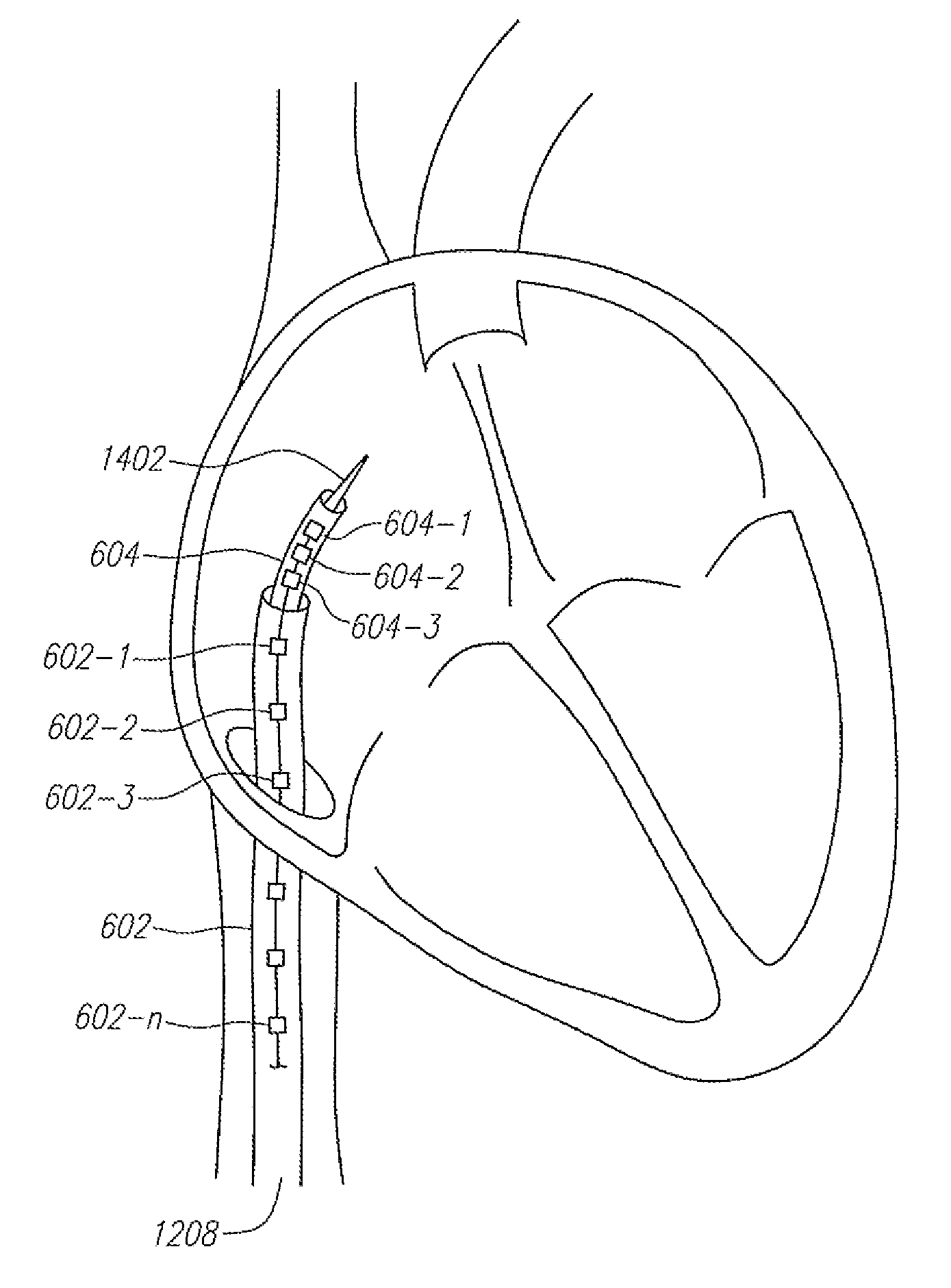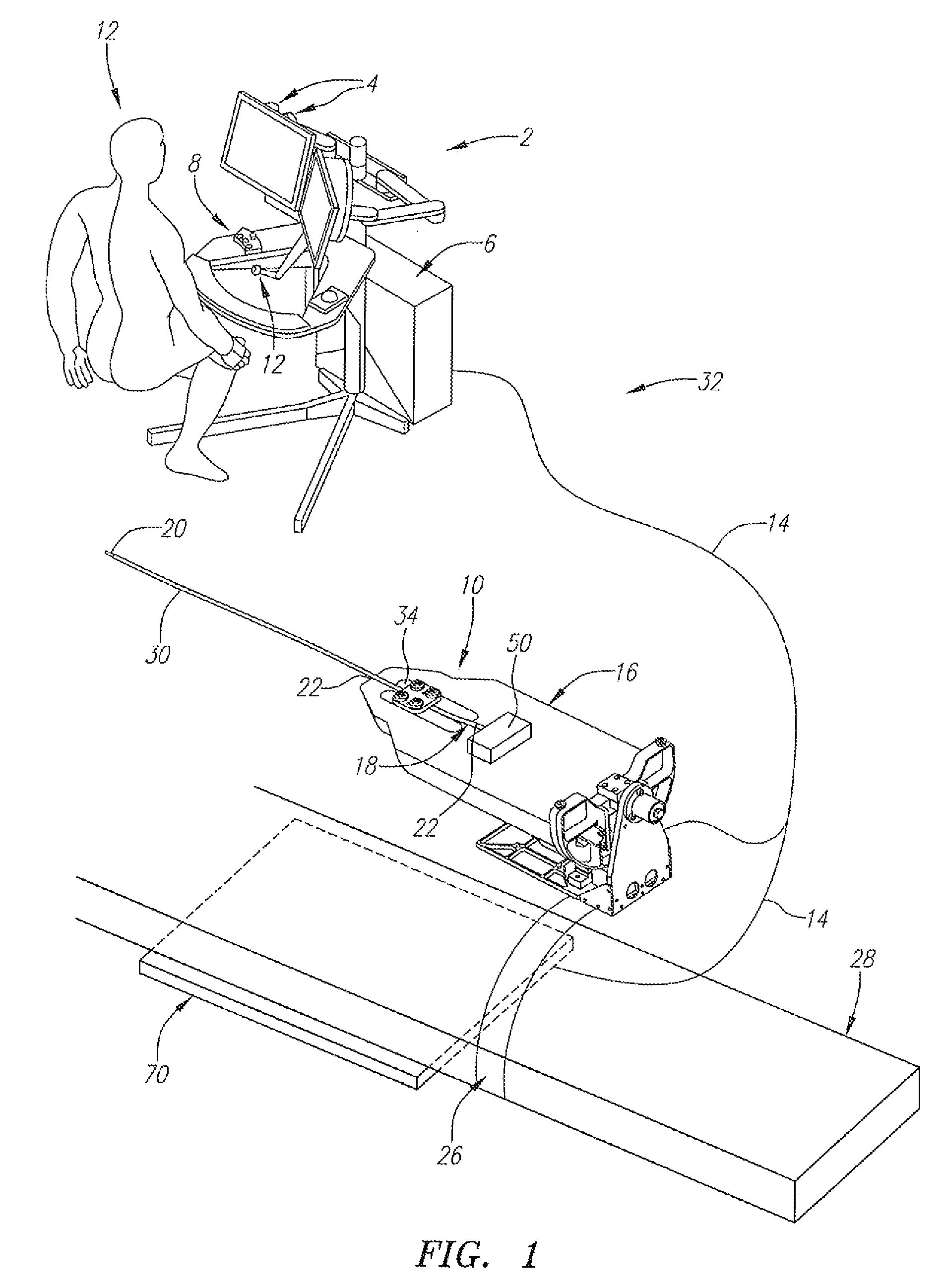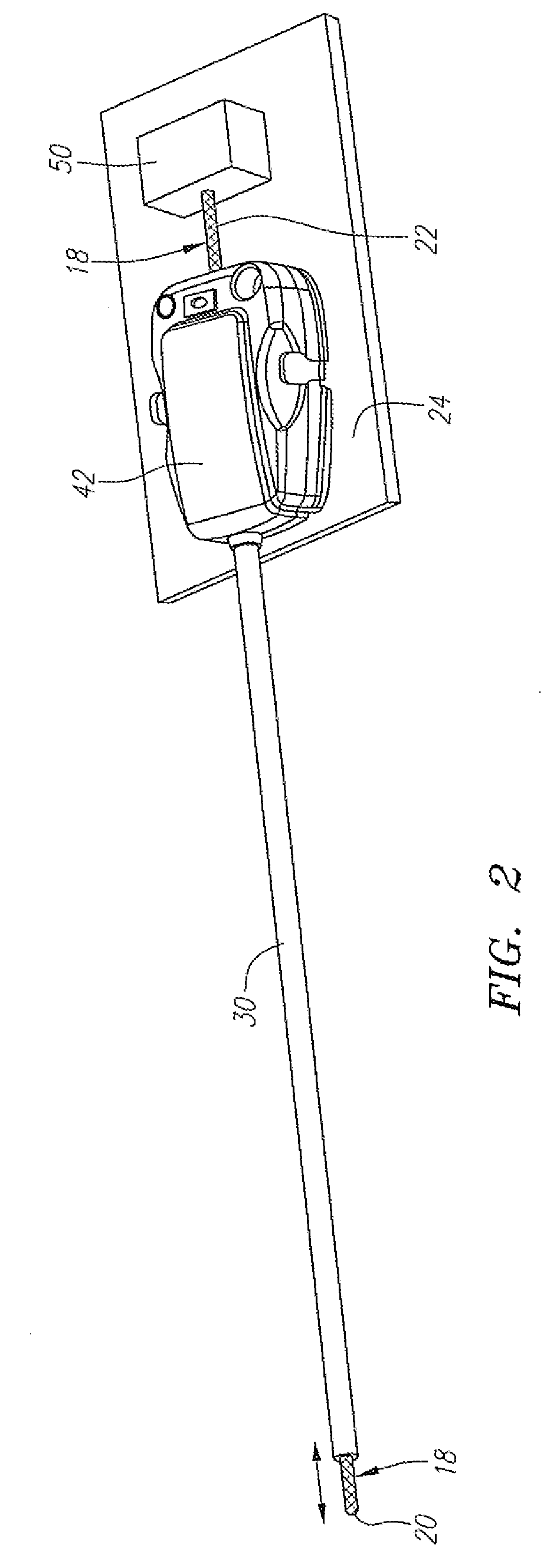Systems and methods employing force sensing for mapping intra-body tissue
a technology of force sensing and intra-body tissue, applied in the field of minimally invasive instruments and systems, can solve the problems of difficult and imprecise estimation of force, and achieve the effect of increasing the amount of applied for
- Summary
- Abstract
- Description
- Claims
- Application Information
AI Technical Summary
Benefits of technology
Problems solved by technology
Method used
Image
Examples
Embodiment Construction
[0054]Robotic interventional systems and devices such as the Sensei™ Robotic Catheter System and the Artisan™ Control Catheter manufactured and distributed by Hansen Medical, Inc., Mountain View, Calif., are well suited for use in performing minimally invasive medical procedures. Exemplary embodiments of robotic instrument systems that may be modified for constructing and using embodiments of the present invention are disclosed and described in detail U.S. patent application Ser. Nos. 11 / 073,363, filed Mar. 4, 2005, Ser. No. 11 / 179,007, filed Jul. 6, 2005, U.S. patent application Ser. No. 11 / 418,398, filed May 3, 2006, U.S. patent application Ser. No. 11 / 481,433, filed Jul. 3, 2006, and U.S. patent application Ser. No. 11 / 640,099, filed Dec. 14, 2006, which are all incorporated herein by reference in their entirety. Additionally, U.S. Patent Publication 2007 / 0233044 (the “'044 publication”), which is incorporated herein by reference in its entirety, discloses embodiments of such rob...
PUM
 Login to View More
Login to View More Abstract
Description
Claims
Application Information
 Login to View More
Login to View More - R&D
- Intellectual Property
- Life Sciences
- Materials
- Tech Scout
- Unparalleled Data Quality
- Higher Quality Content
- 60% Fewer Hallucinations
Browse by: Latest US Patents, China's latest patents, Technical Efficacy Thesaurus, Application Domain, Technology Topic, Popular Technical Reports.
© 2025 PatSnap. All rights reserved.Legal|Privacy policy|Modern Slavery Act Transparency Statement|Sitemap|About US| Contact US: help@patsnap.com



